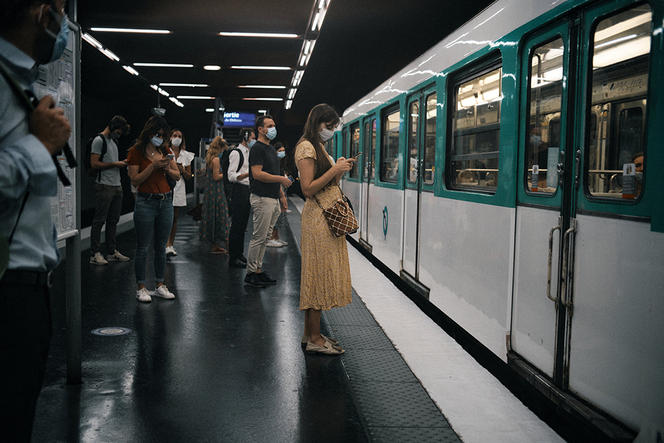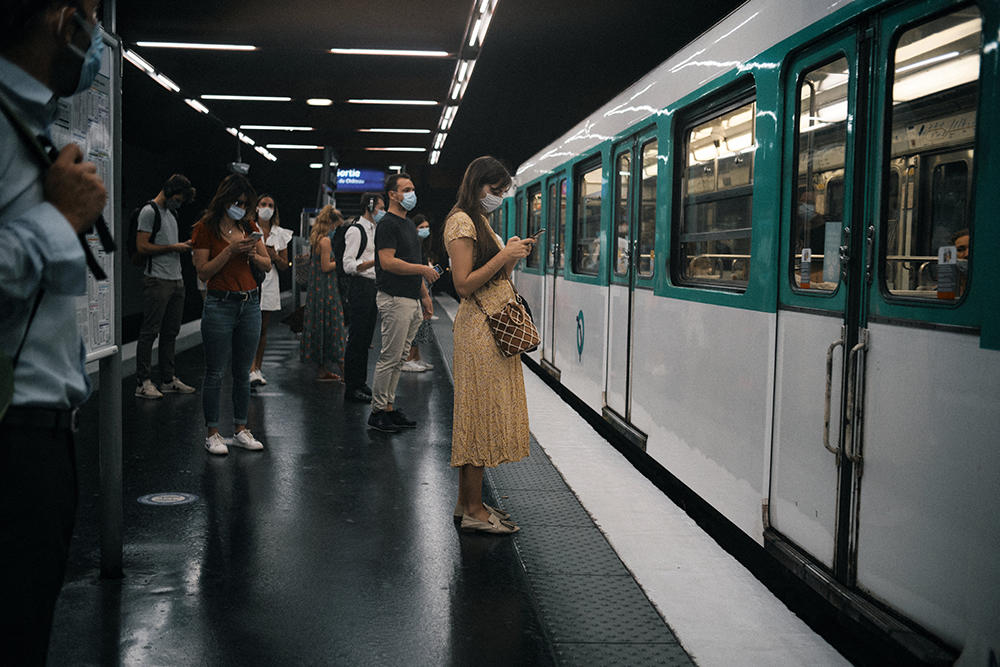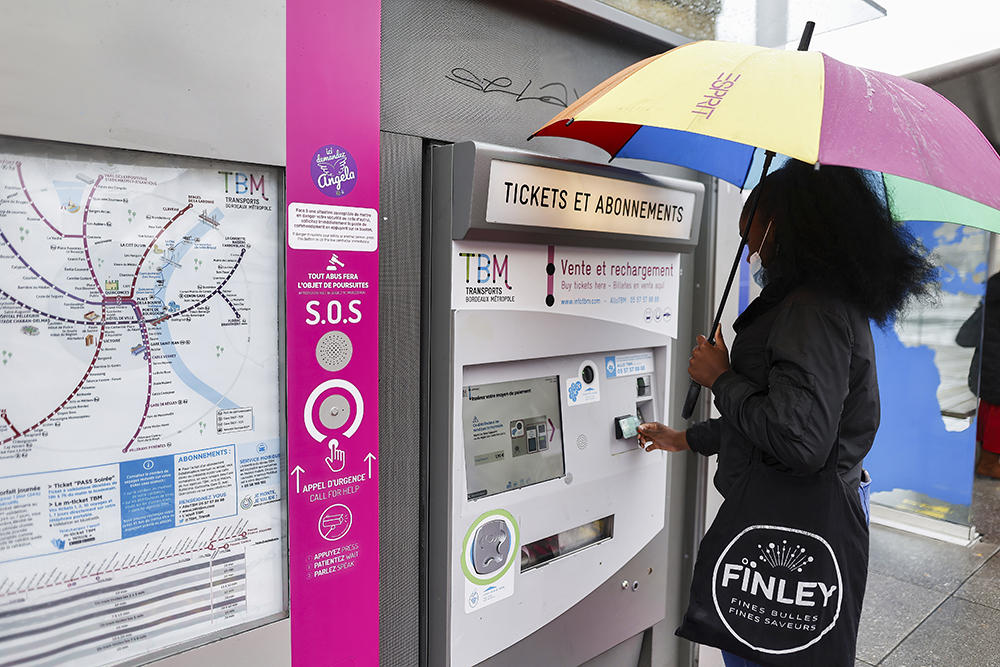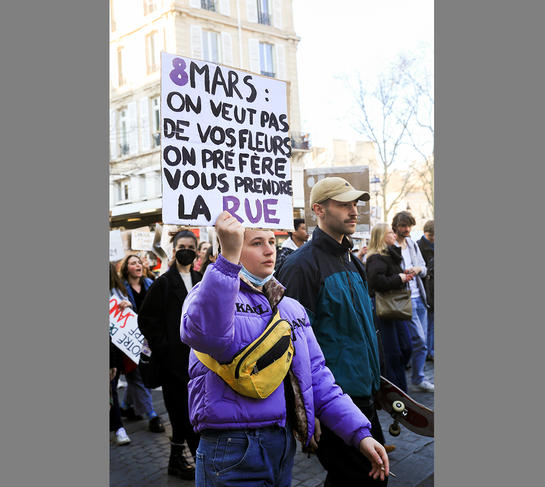You are here
Women and the city
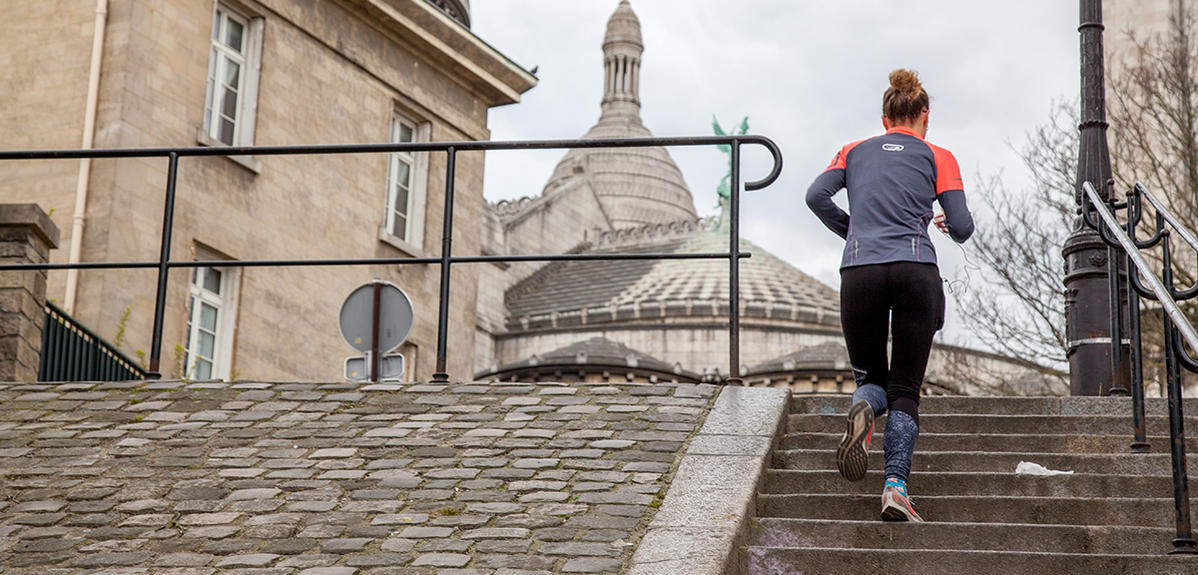
Turning the corner of a narrow lane, walking down a cul-de-sac, taking the bus, or simply at nightfall, they are on their guard. To be a woman in the city often means feeling constantly unsafe, an everyday reality that differs from that of most men. And such fear is legitimate: whether in the street or in public transport, they are victims of harassment. This phenomenon is nearly systematic, according to Yves Raibaud, a specialist in gender geography who has demonstrated the problem in his work as a researcher at the Passages1 laboratory and a project leader in gender equality. “Back in 2011 in Bordeaux southwestern France, when we started investigating this issue with a series of studies called ‘Gender and the city’ that included a survey asking specific questions, we immediately received more than 1,500 responses from women who reported being inappropriately touched, harassed, followed, etc.,” he recalls. According to a 2015 report by the French high council for gender equality (HCE), 100% of the women surveyed had already been victims of harassment in public transport.2
A male space
As a result, women adopt certain behaviours to cope with life in the city as best they can. “In contrast to men, before going somewhere, they will often plan exactly how to get there,” explains Nadine Cattan, a geographer and CNRS research professor at the Geography-Cities laboratory,3 which has studied gender-based inequal access to the city. “They think through the itinerary beforehand in order to avoid places that they feel are unsafe, whether they have actually experienced harassment there or not. Common perception of the city and its degree of danger affect women’s practices and mobility much more than men’s,” the geographer asserts, adding that the former are always in motion: “All the surveys that we have happened to conduct show that a woman cannot simply stand waiting somewhere – for a taxi to pick her up, for example. She has to be walking.”
Another strategy that has been observed consists in creating an “emotional bubble”, enabling a woman to isolate herself from the people around her and thus feel more comfortable. She does this by stepping up her pace, keeping a certain distance from others, or perhaps by wearing earphones to show that she is not socially available.
Moreover, gender inequality in the urban space does not stop there – the design of the city itself is unfavourable to women. A symbol of collective life that can offer women a place of freedom where to assume their rights, the city nonetheless is intrinsically unequal in the way it is designed. “It’s conceived for men,” Raibaud declares. Theoretically intended to serve the entire population, in practice many public culture and leisure facilities are used primarily by males.
“From my studies on sport conducted in Geneva Switzerland and Bordeaux, we see that 75% of public budgets dedicated to leisure and sport are used by boys and men,” the researcher notes. “One example is the much larger number of installations for ‘male’ sports (in particular skateparks and football pitches, frequented nearly exclusively by men) than for ‘female’ activities (gym, dance). And yet, the latest surveys dating from 2020 show that women get as much exercise per week as men – meaning that they benefit from only 25% of public spending!”
Inequality in the bike lanes
Even some practices that appear to promote well-being for everyone, as part of a sustainable city, still disadvantage women. Encouraged by certain local authorities, the phasing out of vehicles in favour of a bike-friendly urban environment actually exacerbates inequalities.4 Raibaud’s 2013 surveys in Bordeaux show that cycling is a predominantly masculine activity: “Women account for only 35% of cyclists. It’s not always easy for them… For example, how do you ride a bicycle with several children? It’s just not possible. If cars are banned from the city, as seen in studies conducted in Quebec, women spend an extra 45 minutes a day ferrying their children,” the geographer reports. “We mustn’t forget that the car has played a role in female emancipation, and is still important for mobility, making it possible to both take children places, hold down a job, do the shopping…”

The urban landscape is just as inegalitarian, if only symbolically. Most streets, squares and parks are named after men, and civic monuments tend towards sexist depictions: men are represented in majestic poses – on horseback, powerful, in a military context… – while women, often nude figures, serve as decoration.
Cities are made for men because they have always been governed by them. As Raibaud points out, “Historically, the city corresponds to power – political, military and financial – under male control. It also belongs to them through its attractions, revolving around economic-sexual exchanges. For example, it’s where in the old days one could find brothels, replaced today by massage parlours, as well as operas featuring sexist representations of women.”
Gender parity: a glimmer of hope?
Today’s society remains patriarchal, with men still representing the majority of decision-makers and builders, in a context of masculine insularity. “The people responsible for land use, the city planners and architects in charge of the cities are males,” the geographer notes. “So they inevitably conceive leisure and functional spaces, in particular for workers, with men in mind. Creating facilities for women, for those who take care of others, children, the disabled, the elderly – is not a priority. It’s an obligation that they would rather not have to deal with.” And civic participation does not tip the balance: once again victims of sexism, women have less of a voice in the decision-making resulting from public consultations. The measures that are adopted penalise them further, remaining based on an image of the ideal citizen as a physically able white male.
Raibaud states it plainly: “In order to have a more egalitarian city, women must have positions of power.” In this sense, he sees a glimmer of hope in the gender parity now required for local and regional councils, as a path towards greater equality. “It works quite well, but it’s not enough,” he says. “It needs to be extended to other governing bodies, including the national legislature. We need women mayors in large cities…” Another solution is gender budgeting, which entails the critical assessment of the budgets allocated to populations according to gender. In the Bordeaux region today, as a result of this type of systematic monitoring, artistic programming must be balanced, to ensure the equal distribution of government grants and subsidies.
Towards a more inclusive city
A number of initiatives have been launched to combat inequality in the city: criminalisation of street harassment, cultural policies favourable to women, gender observatories, new street names… Although encouraging, these efforts are not, however, sufficient for ensuring a neutral urban space. According to researchers, the basic model needs to be reworked. “The city must be more fluid,” Cattan insists. “We need to rethink our land use and strategic planning. In transportation, for example, we could have much more hybrid methods that are better suited to demand, as some cities are already doing. I’m thinking of buses that, instead of halting only at bus stops, also let passengers on and off outside building entrances. It’s a way of improving local transportation, making it a bit more individualised.” One of addressing the reality of women’s lives in the city.
Cattan is also in favour of promoting hybridisation of urban spaces: “We need to be able to make a given place more multifunctional, with greater adaptability. For example, a space could accommodate a non-profit organisation one day, a shop the next day… It would be continually co-constructed by those who use it. We need to think of open, coinhabited spaces that can accommodate the greatest number of different kinds of people, and respond to everyone’s interests.”
- 1. CNRS/ ENSAP Bordeaux / Université de Bordeaux / Université Bordeaux Montaigne / Université de Pau et des Pays de l’Adour.
- 2. https://www.haut-conseil-egalite.gouv.fr/violences-faites-aux-femmes/act...
- 3. CNRS / EHESS / Université Panthéon-Sorbonne / Université Paris Cité.
- 4. “Durable mais inégalitaire : la ville” (“Sustainable but Unequal: The City”), Yves Raibaud, Travail, Genre et Sociétés, 33, 2015, 29, 10.3917/tgs.033.0029, halshs-01179180.


